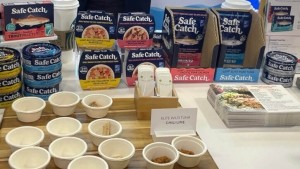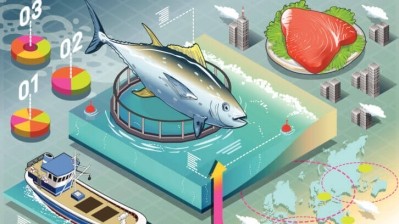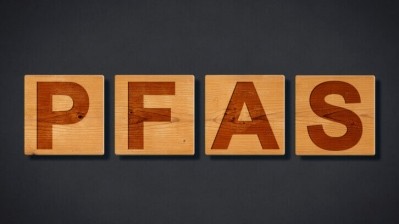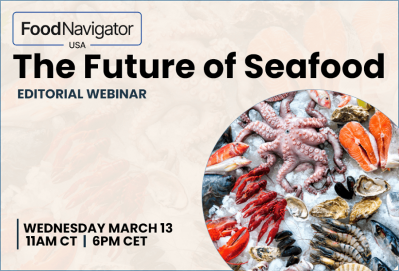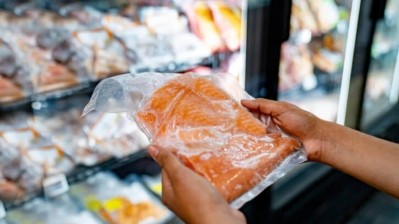Natural Products Expo West
Safe Catch sets its own heavy metal standards for packaged seafood
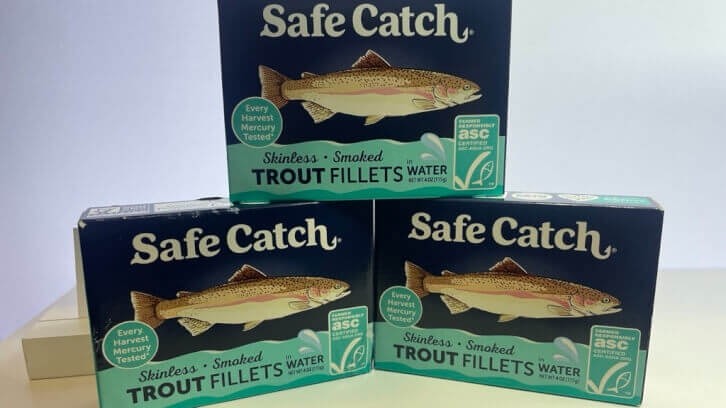
Building a preventative and scalable heavy metal testing technology for seafood
Wittenberg and his Silicon Valley team built the metal testing machine by hand for seafood after learning his mother, who began eating canned tuna regularly, was tested for mercury that “was 10 times above what the FDA said was safe,” and adding that the gap in the marketplace for scalable heavy metal testing “was a technology issue" for consumers who eat canned seafood.
“There were two technologies—ICP-MS, which is plasma mass spectrometry and CVAA, cold vapor atomic absorption. These are really accurate technologies for testing heavy metals, but they do not work at scale. They take $100 per test, require sophisticated labor, a laboratory environment … They could not do any type of preventative testing to protect consumers before they get the seafood,” Wittenberg elaborated.
By 2007, Wittenberg and his team developed the technology that can analyze a tissue sample “the size of a grain of rice” and determine “the exact mercury concentration to the part per billion,” which he explained as a “paradigm-changing technology to testing heavy metals in food.”
While the company experienced some success to test its technology with the larger CPG seafood players, “no one wanted to adopt the standards that I wanted to implement,” Wittenberg emphasized, highlighting policy limitations for more stringent metal testing in food as well.
Instead, Wittenberg and his co-founder bought out their former shareholders who had invested in the technology to form Safe Catch in 2013 with its metal testing technology as the core feature of the brand.
“Now we have a product that has a standard … 10 times below the FDA standards”
For its canned tuna, salmon, wild sardines and wild mackerel, Safe Catch guarantees purity from heavy metals, in addition to being non-GMO Project Verified, 30 Whole Approved and the American Pregnancy Association’s official tuna.
“Now in Safe Catch, I am able to encapsulate all of our values in one camp. I want people and animals to have pure healthy food. And I want to protect the integrity of this planet … So now we have a product that has a standard, that would be 10 times below the FDA standards … we have standards that align with the medical community,” he said.
With recommendations from medical professionals at UC Davis and Harvard School of Public Health, Safe Catch developed Safe Catch Elite, which contains an average of 25 times below the FDA standard, keeping the most vulnerable consumers in mind. The Elite tuna portfolio features original, Chili Lime, Citrus Pepper, Garlic Herb flavors.
The company’s lineup also includes a pouch format for its Pacific pink salmon in Citrus Dill, Italian Herb and Rosemary Dijon, and wild ahi yellowfin tuna, which contains an average 25 times below the FDA mercury limit.
“You think about a pregnant woman, a small child, a cancer patient and people that cannot be exposed to any impurities, let’s make something pure enough for them. Because if we do … then we can eat the same pure things too,” Wittenberg explained.
Ensuring the technology’s validity, Safe Catch hired a third-party firm to “independently audit our supply chain” in 2016 after being challenged by California’s District Attorney to verify the accuracy of the machine; in addition to an AOAC certification, “which is the gold standard for certifying analytical equipment in the food space,” Wittenberg added.
Through the AOAC certification, Safe Catch’s testing accuracy was “just as accurate as the ICP-MS,” with time and cost as the significant differentiator.
“The only difference is our machine does it in seconds for pennies, as opposed to days and weeks and hundreds of dollars,” Wittenberg explained.
In addition to Safe Catch’s technology certifications, its packaged tuna and salmon were announced as Marine Stewardship Council (MSC) Blue Fish Label-certified at the end of 2022, highlighting the company’s adherence to MSC’s stringent sustainable certification standards.
The company also includes an Aquaculture Stewardship Council (ASC)-certified smoked trout in water, which was featured as a NEXY finalist during Expo West and expected to launch this year.
With half of the world’s shelf-stable tuna set up in Thailand, Safe Catch sources from suppliers in the Asia Pacific region and other parts of the world, where the company only purchases fish that successfully pass the metal testing, Wittenberg explained.
While Safe Catch’s products are sold at a premium, Wittenberg emphasized that the company leverages its metal testing technology and packs its cans with seafood instead of additional water, in addition to using ocean plastic for its packaging.
Expanding heavy metal testing for Safe Catch’s portfolio
With the purchase of seafood snack brand, Scout, Safe Catch will use its testing technology to “make [Scout’s] product safer, healthier,” without impeding on the brand’s innovation, Wittenberg said.
Additionally, Safe Catch is pivoting to pet food products with its cat food brand Pure Cravings, another avenue for the company to use its testing technology to reduce the number of heavy metals in pet food which “can be between six to 600 times higher than human food,” Wittenberg explained.
The company works with pet nutritionists to develop its protein-forward tuna and salmon formula. The line features 25 SKUs, contains human-grade fish and no grains or GMOs, in addition to using sustainably caught fish and mercury tested.
“These are byproducts. No one is focusing on it, and because it is a repetitive diet, these cats and dogs in particular are getting exposed to tons and tons of heavy metals,” he added.
Working with UC Davis’ veterinary professionals, Wittenberg and his team developed a standard that is “93% below the FDA limit, and there is no FDA limit,” on heavy metals he said.
Wittenberg added, “We consider animals to be living beings that should have the same standards as us. We must protect all living things … And to protect the integrity of the planet. We are realizing that vision across our full portfolio.”
